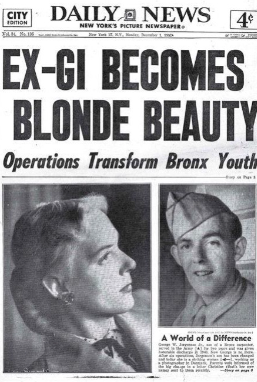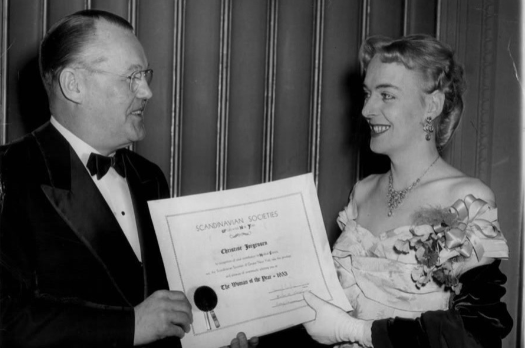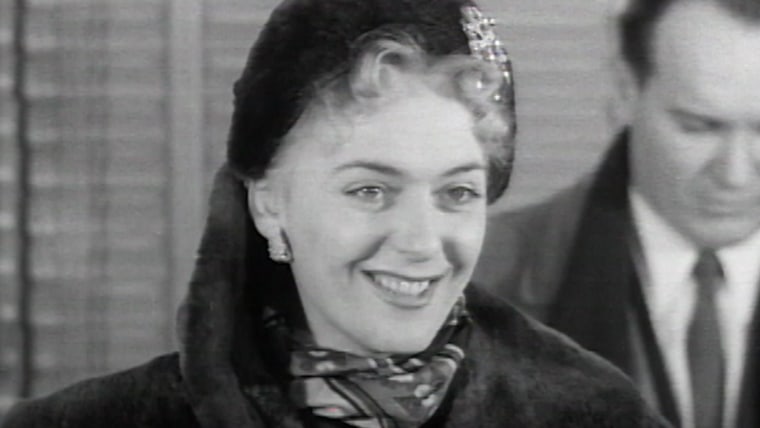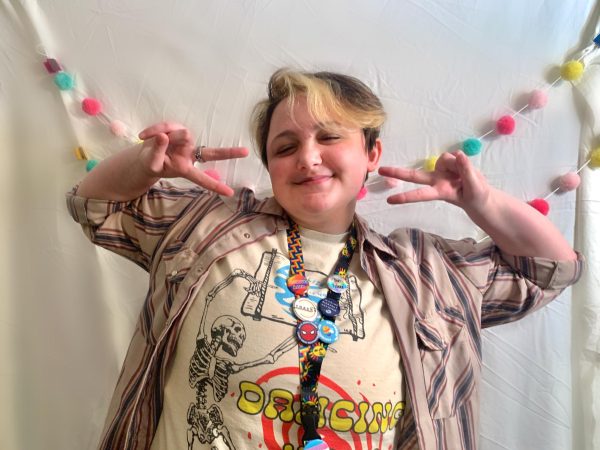When attempting to tear down transgender folks today, many will allege that the trans identity has only recently emerged within the 21st century. This, however, is a blatant lie; just another tactic to bring down a group of people they know nothing about by spreading misinformation. Trans people have existed as long as humanity has, stretching back as far as BCE Ancient Egypt. Christine Jorgensen marked a massive turning point in regards to both knowledge about transgender people and especially the acceptance of trans people. Despite modern attempts to ignore and erase her, Jorgensen is still widely seen as a transgender icon who pioneered the trans acceptance movement within and outside of the trans community.
Christine Jorgensen, born May 30, 1926, was a transgender woman beloved by the press and people of America after she successfully medically transitioned thanks to a doctor in Denmark. Much like the stories of trans people all over the world, Jorgensen always knew that she was different. Growing up she never had the words to describe it, nor had she met anyone to help her understand her alienating feelings. After graduating high school, she joined the US military to fight in World War II. She was discharged in 1946, and only a few years later she traveled to Denmark to pursue gender affirming care. Finally, Christine Jorgensen knew what made her different growing up, but she would also learn to love and accept this difference. For the first time in her life, she truly felt like herself instead of pretending to be someone she wasn’t. It was a freeing thing, being able to find herself, even if it meant enduring surgeries and hormone replacement therapy.
Jorgensen had no intention of being open about her transition, but in the end that choice was taken away from her on the first day of December, 1952. The New York Daily News made the decision to share Jorgensen’s story, publishing an article headlined “Ex-GI Becomes Blonde Beauty: Operations Transform Bronx Youth.” Suddenly, she was being talked about all over the world.

Arguably the strangest thing about the publicity was the reaction of everyone. In the modern day, we look back on the 50s as a very difficult time for minority groups. Christine Jorgensen lived in a time that was 14 years out from the end of segregation, and there were publishers in places like New York and Los Angeles “accusing” celebrities of being gay to bring them to ruin. Yet within this hateful world, Jorgensen became beloved by many people nationwide.
Upon her return to America post-operation, so many people appeared to greet her that she needed an escort through the immense crowds. Like most trans people today, it was inevitable that she faced uncomfortable, personal, and sometimes rude questions or statements. While some would shy away from the probing public eye, Jorgensen seized the opportunity she was given to educate the world on the lives of trans people. The press wasn’t always the kindest, calling her mentally ill and debating on whether she was a “real” man or woman, something that still continually occurs in the United States news cycle relating to trans identity. Jorgensen was under intense watch in an attempt to see if she did anything the public deemed not “woman enough”. In response to these people, Jorgensen continually stressed the importance of viewing identity over sex and understanding how diverse one’s identity can be. She was a firm believer that no one had to be fully man or woman, but instead, just who they felt like inside. She wrote in her autobiography, “I was never an absolute male and I shall never be an absolute female. But whatever the value of percentages in the scale of sex determinants, there are no absolutes; even the most masculine or feminine person approximates only eighty percent of the possible total. There is no one hundred percent Adam or Eve.”
Christine Jorgensen used the platform she had never expected to receive to spread both acceptance and understanding of transgender people. She consistently stressed the importance of gender affirming care to the world as it was something that transformed her life, and she knew it would change the lives of so many others around the world. She did her best to indicate a definitive distinction between cosmetics for fixing insecurities and life saving care for people with gender dysphoria. On this topic she stressed, “I am not alone in this affliction. It may mean new hope and life to so many people. I think we (the doctors and I) are fighting this the right way — make the body fit the soul rather than vice versa.” For the most part, the public loved her message and loved Christine. She was held in high regard and beloved by many. Her background as a veteran for the US army stoked the patriotism of residents in the United States which played a vital role in her acceptance. In 1953, the Scandinavian Societies of Greater New York presented Christine Jorgensen with the “Woman of the Year” award, something that is very unlikely to happen nowadays.

As the debate over access to gender affirming care grows as a hot topic and is being pushed against more and more, it’s important to reflect on Christine Jorgensen’s words and her goal of acceptance. Gender affirming health care is life changing and most importantly life saving. While trying to fight for acceptance, Jorgensen stands as a beacon of hope that the world will not always be so cruel. If she could be accepted as a woman in the 50s, we can cling onto hope that we will soon reach that level of acceptance once more as we progress through the 2020s.
Sources:
Boomer, Lee. “Life Story: Christine Jorgensen.” Women & the American Story, 9 July 2022, wams.nyhistory.org/growth-and-turmoil/cold-war-beginnings/christine-jorgensen/.
Brittanica, The Editors of Encyclopedia Brittanica. “Christine Jorgensen.” Encyclopædia Britannica, Encyclopædia Britannica, inc., 12 Sept. 2023, www.britannica.com/biography/Christine-Jorgensen.
“Christine Jorgensen.” Transas City, 16 Oct. 2018, transascity.org/history/jorgensen-christine/.
Malloryk. “From GI Joe to GI Jane: Christine Jorgensen’s Story: The National WWII Museum: New Orleans.” The National WWII Museum | New Orleans, The National World War II Museum, 29 June 2020, www.nationalww2museum.org/war/articles/christine-jorgensen.
Pathé, British, director. World’s First Hormone Therapy Transsexual – Ex-GI Soldier Christine Jorgensen (1953). British Pathe, 1953, https://youtu.be/8FYZ6m06bDU?si=y34_YaUWpDCtV3ya. Accessed 28 Sept. 2023.









